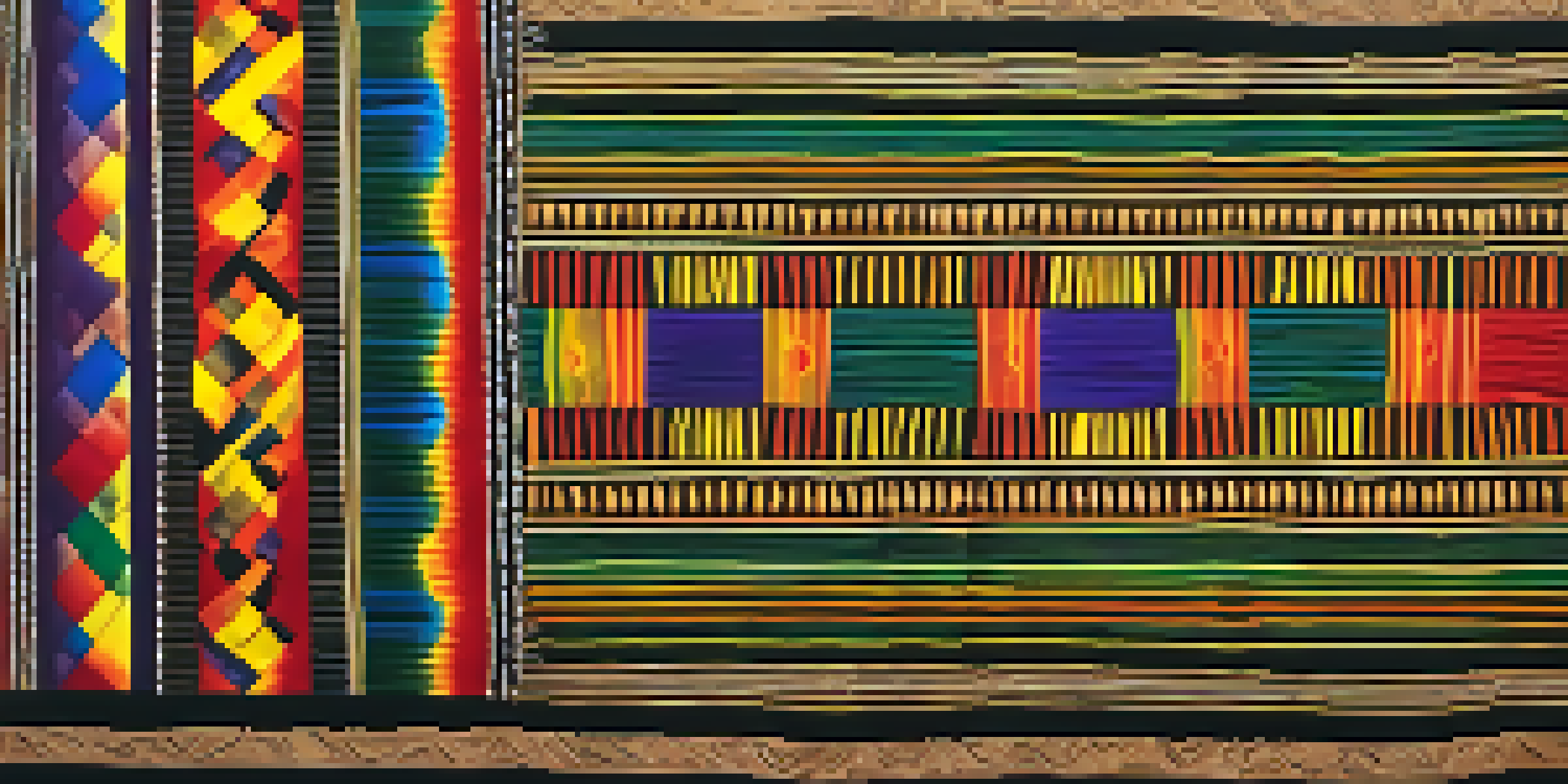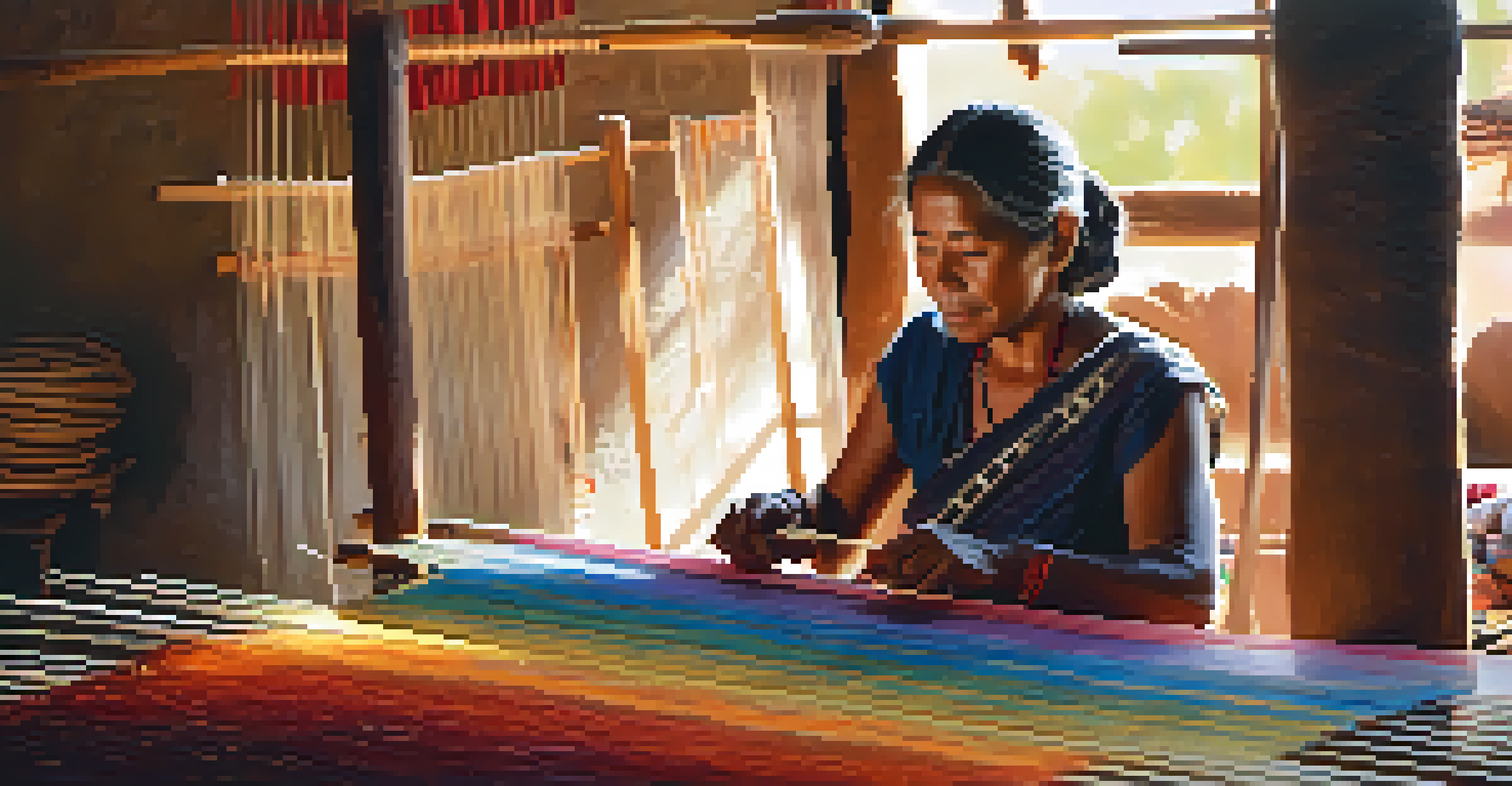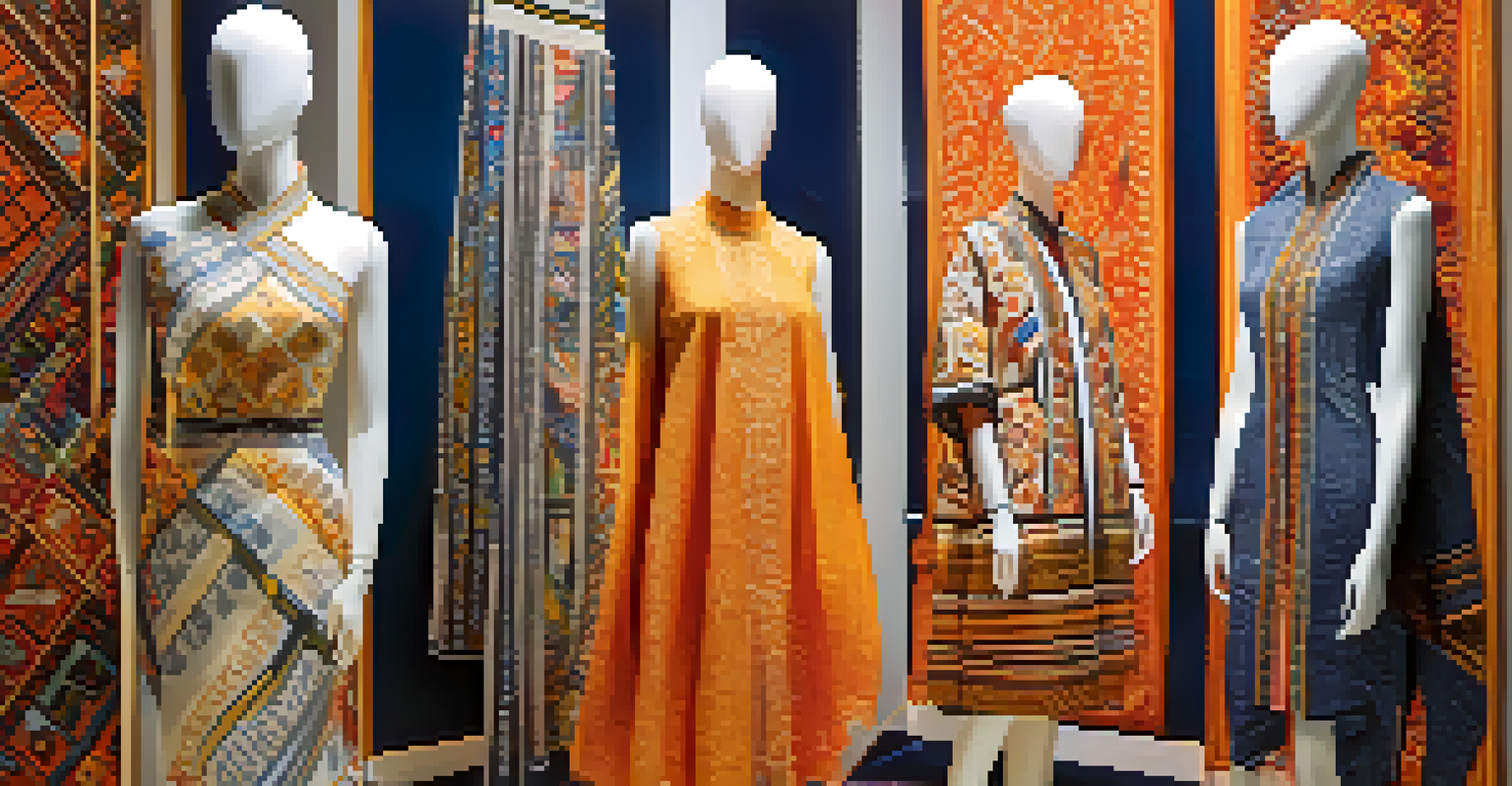Folklore and Textile Arts: Weaving Stories into Fabrics

Understanding the Connection Between Folklore and Textiles
Folklore and textile arts share a deep-rooted connection that transcends time and culture. Traditionally, textiles have been a canvas for storytelling, where patterns and colors convey cultural beliefs and histories. Each stitch and weave can represent myths, legends, and the very essence of a community's identity, making the fabric not just a material but a narrative vessel.
Textiles are the fabric of our culture, weaving the stories of our past into the present.
For instance, in many Indigenous cultures, specific patterns in weaving symbolize the relationship between people and nature. These stories are passed down through generations, often teaching values and traditions that shape a community's way of life. Therefore, textiles become a living archive, preserving the voices of ancestors and the wisdom of the past.
In this way, textiles do more than just serve functional purposes; they encapsulate the emotions, struggles, and triumphs of the people who create them. Understanding this connection enriches our appreciation for textile arts, revealing how deeply intertwined our stories are with the fabric we wear and use.
The Role of Symbols in Textile Designs
Symbols play a crucial role in textile designs, acting as visual language that communicates complex ideas. For example, the motifs in African kente cloth are not just decorative; they convey messages about social status, history, and even personal achievements. Each color and pattern holds specific meanings, making the fabric a storyteller in its own right.

Similarly, in South American textiles, the patterns can represent geographical features, animals, or historical events. Weavers often incorporate these symbols purposefully, allowing them to celebrate their heritage and share their narratives with the world. Such textiles become a bridge that connects the wearer to their cultural roots.
Textiles as Storytelling Medium
Textiles serve as a canvas for cultural stories, embodying the beliefs and histories of communities through patterns and colors.
As we delve into these symbols, it becomes clear that they serve multiple purposes—beautifying textiles while also imparting wisdom. This dual role highlights the importance of understanding the stories behind the designs, reminding us that every piece of fabric has a narrative waiting to unfold.
Traditional Weaving Techniques and Their Stories
Traditional weaving techniques vary across cultures, each with its own unique story and significance. For instance, the backstrap loom used by many indigenous groups in Central America is not just a tool for weaving; it embodies a communal experience where family members often gather to create together. This shared labor fosters relationships and strengthens cultural bonds.
A quilt is a treasure that has a story to tell, a tapestry of memories sewn together with love.
In contrast, the intricate patterns found in Japanese kimono fabrics reflect centuries of craftsmanship and artistry. Each technique, from shibori (tie-dye) to tsumugi (silk weaving), has its own history, revealing the cultural values and aesthetic philosophies of the time. The stories behind these techniques add layers of meaning to the textiles produced.
As we explore these traditional methods, we learn that they are not merely skills but are steeped in the histories and narratives of the people who practice them. Embracing these stories allows us to appreciate the artistry and significance behind every handmade textile.
Modern Interpretations of Folklore in Textiles
In today’s globalized world, modern artists and designers are reinterpreting traditional folklore in innovative ways. By blending contemporary styles with age-old techniques, they breathe new life into textile arts while preserving their cultural significance. This fusion showcases how traditions can evolve yet remain relevant in a modern context.
For example, contemporary fashion designers may incorporate traditional motifs into their collections, making folklore accessible to a wider audience. This not only honors the original stories but also sparks conversations about cultural identity and appropriation in the fashion industry. Such dialogues are crucial in understanding how we interact with and celebrate diverse heritages.
Symbols Convey Cultural Significance
Symbols in textile designs act as a visual language, communicating complex ideas about heritage, identity, and social narratives.
Through these modern interpretations, textiles continue to tell stories but in a way that resonates with current generations. This evolution highlights the dynamic nature of folklore, reminding us that stories are not static but can adapt and grow as society changes.
Preserving Cultural Heritage Through Textile Arts
Textile arts play an essential role in preserving cultural heritage, serving as a medium through which traditions can be sustained. Many communities actively engage in reviving traditional techniques and stories to pass them down to future generations. This effort not only keeps the art form alive but also instills a sense of pride and identity among community members.
Organizations and artisans often collaborate to create educational programs that teach these skills to younger generations, ensuring that valuable cultural knowledge is not lost. By participating in these initiatives, individuals can connect with their heritage and understand the significance of the stories woven into their textiles.
In this way, the preservation of textile arts becomes a collective endeavor, fostering a sense of community and continuity. As we support these initiatives, we contribute to the protection of cultural narratives that enrich our global tapestry.
The Emotional Impact of Textiles and Their Stories
Textiles are not just physical items; they often carry emotional weight and personal stories. A handmade quilt might remind someone of family gatherings and shared laughter, while a woven shawl could symbolize comfort and warmth during difficult times. These emotional connections reveal how textiles can encapsulate our memories and experiences.
Moreover, when we wear or use textiles that are rich in stories, we become part of a larger narrative. Each piece can evoke feelings of belonging and identity, reminding us of our place within the fabric of our communities. This emotional impact highlights the power of textiles to connect us with our past and present.
Preserving Heritage Through Art
Engaging in traditional textile arts helps preserve cultural heritage, fostering community pride and passing down valuable skills to future generations.
As we recognize the emotional significance of these fabrics, we develop a deeper appreciation for their artistry. This understanding encourages us to cherish and honor the stories that textiles carry, reinforcing their role as not just functional items but meaningful artifacts.
Conclusion: The Future of Folklore in Textile Arts
As we look to the future, the intersection of folklore and textile arts continues to evolve. New technologies, such as digital printing and sustainable materials, provide fresh avenues for storytelling through fabric. Artists are embracing these innovations while remaining rooted in tradition, creating a beautiful blend of old and new.
Furthermore, the growing appreciation for handmade and artisanal products suggests a shift towards valuing the stories behind textiles. Consumers are increasingly interested in the narratives that accompany their purchases, seeking connections to the artisans and cultures they represent. This trend encourages the continued exploration of folklore in textile arts.

Ultimately, the future of folklore in textiles lies in collaboration, innovation, and respect for tradition. By weaving these elements together, we can ensure that the stories behind fabrics remain vibrant and impactful for generations to come.